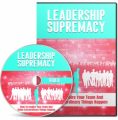 License Type: Master Resell Rights
License Type: Master Resell Rights  File Type: ZIP
File Type: ZIP
 SKU: 63288
SKU: 63288  Shipping: Online Download
Shipping: Online Download
Sample Content Preview
51 Ways to Cope with Frozen Shoulder
Three percent of the population will develop frozen shoulders in their lifetime. If you are one of those three percent, this ebook will help you with tips and resources to better deal with frozen shoulders.
BASICS
This first set of tips will give you some basics about frozen shoulder and will help you to understand it better.
1. Definition
Frozen shoulder is another term for Adhesive Capsulitis, a condition that causes restricted motion in the shoulder joint.
2. What Happens
With frozen shoulder, the shoulder joint becomes stiff and scarred. The shoulder joint usually allows more motion than any other joint in the body. But when someone develops a frozen shoulder, they form bands of scar tissue called adhesions. These adhesions make the shoulder stiff, and moving it becomes very painful.
3. Symptoms
Here are some of the symptoms associated with frozen shoulder:
- A dull, aching pain in the shoulder
- Limited shoulder movement?
- Activities such as brushing hair, putting on shirts/bras become difficult?
- Sleeping on the affected shoulder is painful
4. Diagnosing
When diagnosing frozen shoulder, your doctor will look for restricted movement. There are other shoulder conditions can cause difficulty with movement of the shoulder, like a torn rotator cuff, so it’s very important to find a doctor familiar with this condition for a proper diagnosis. This will be covered later in this ebook.
5. Is it Curable?
95 percent of people with frozen shoulder are completely cured. Full recovery may take several months, and there are several things that you can do to help. We’ll review these things a bit later in this ebook.
RISK FACTORS
There are several factors that put you at risk for developing frozen shoulder. This next set of tips will discuss some of these risk factors.
6. Trauma or Surgery
People who have had a shoulder injury, or surgery on the shoulder are at risk of developing a frozen shoulder joint. When injury or surgery is followed by prolonged immobility, it can also put them at risk of developing a frozen shoulder.
7. Diabetes
People with diabetes are at risk for developing a frozen shoulder. In fact, frozen shoulder affects 10-20 percent of diabetes patients.
8. Age and Gender
People between the ages of 40 to 60 years old have a higher risk of developing frozen shoulder. It is also twice as common for women to develop it as it is for men.
9. Problems with Nearby Joints
If you have problems with nearby joints, you could be at risk for frozen shoulders. For example, arthritis in the AC joint or the neck can put you at risk.
10. Immobility
As mentioned earlier, keeping a sore shoulder immobile can put you at high risk for frozen shoulder. Some conditions that could cause this include stroke, immobilizing in a sling, or a brain or spinal injury.
11. Heart or Lung Problems
Sometimes heart disease or cardiac surgery leads to frozen shoulder. Be sure and talk to your doctor about these important risk factors.
- License: Master Resell Rights
- Category:Ebooks
- Tags:2020 Ebooks With Audio Master Resale Rights








